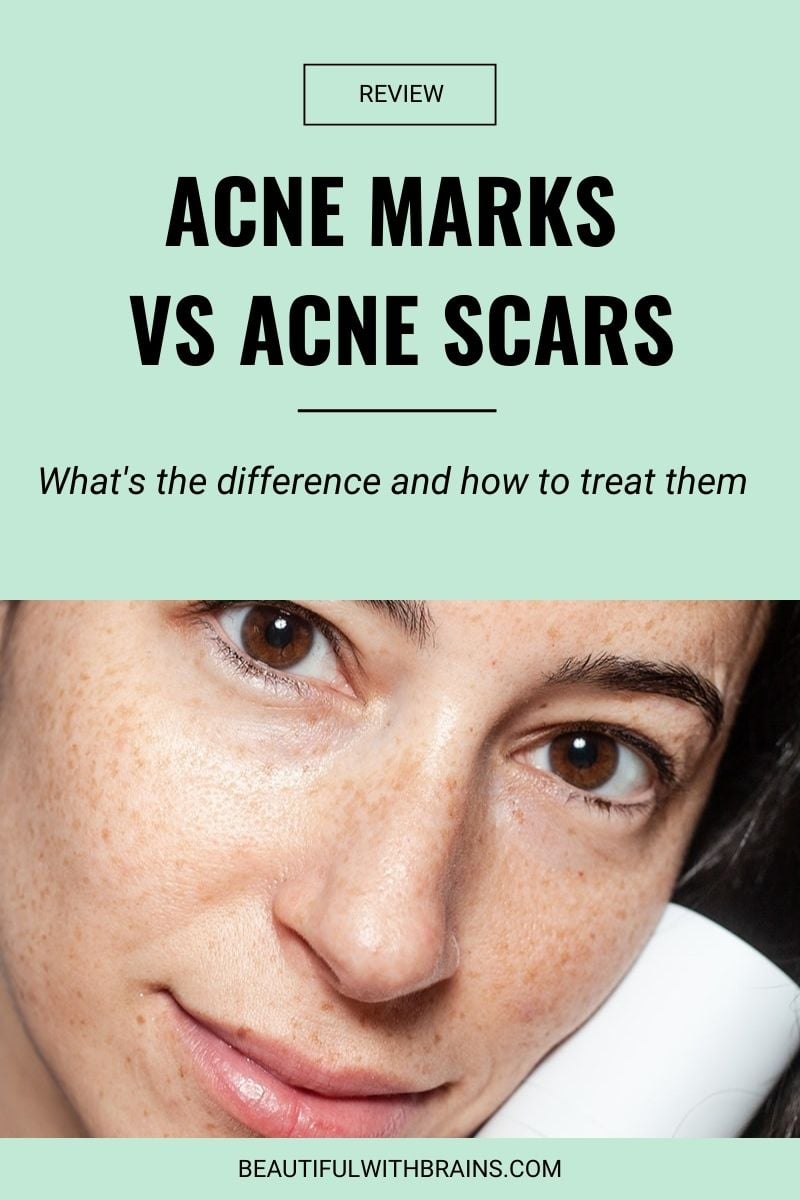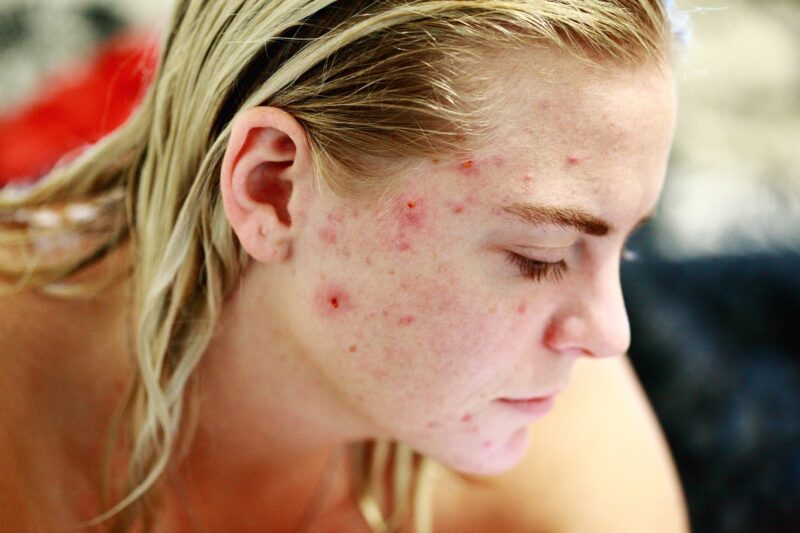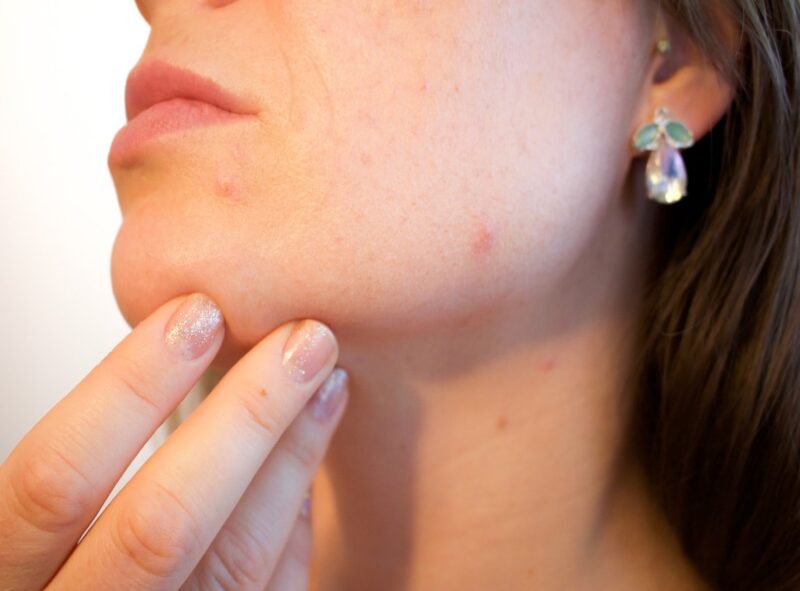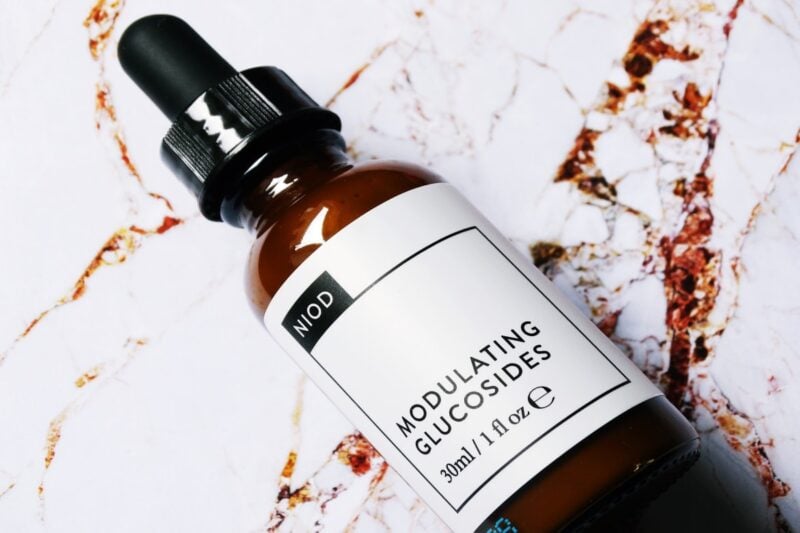
The worst thing about acne? When a breakout clears up, you don’t always get your clear skin back.
Nope, sometimes those pesky pimples leave unsightly traces of their presence behind… in the form of dark spots and scars. Ugh.
FYI, they’re not the same. I’m often approached by clients asking my help to clear up the marks on their skin, believing they’re some sort of scars… when in reality they’re just a temporary discolouration that’ll heal on its own (but you can give it a helping hand).
How do you know what you’re really dealing with? Here’s the difference between acne scars and acne marks (dark spots) and how to treat them:
What’s The Difference Between Acne Scars Vs Acne Marks?
Acne scars and acne marks look different.
Acne scars create irregularities in the skin’s texture. They’re raised or indented – and usually permanent. Getting rid of them, especially if you don’t act fast, isn’t easy.
Acne marks are flat, either red or brown in colour, and tend to fade away on their own (it takes months). But, you can speed up the process with exfoliation and other treatments.
Want a cost-effective skincare routine for acne that works? Subscribe to my newsletter below and receive The Ordinary Acne Skincare Routine Cheatsheet:
What Causes Acne Scars?
Acne scars happen when the healing response to skin inflammation goes wrong. It works like this:
When you pick at your acne lesions (DON’T do it!), your body stops the bleeding by sealing off damaged blood vessels with platelets. These platelets attach to collagen and secrete some healing substances, including growth factors.
Once you stop bleeding, your contracted blood vessels relax again, causing redness. Melanin production can be triggered, too. Then, your body starts creating new blood vessels and fixing your skin by creating new collagen.
During a normal healing process, your body releases Matrix Metalloproteases (MMPs) to degrade old collagen and Tissue Inhibitors of Metaloproteases (TIMPs) to keep them in check and deactivate them once they’ve done their job.
In an abnormal healing process, MMPs are NOT balanced by TIMPs, leaving scars in their wake.
Too many MMPs? You’re left with atrophic (indented) scars caused by the destruction of new collagen during the healing process. Most types of acne scars are indented.
Too many TIMPs? You’re left with hypertrophic (raised) scars caused by the overproduction of collagen during the healing process.
Related: How To Deal With Teenage Acne

What Causes Acne Marks?
Acne marks. Dark spots. Post-Inflammatory Hyperpigmentation (PIH). All the same thing.
Acne marks are due to inflammation. When skin is under attack, it sends plenty of white blood cells (your body’s natural police force) into the bloodstream. This increases blood flow to the injured area, which now turns red.
Problem is, your body’s police doesn’t come alone. Your body sends melanocytes to the scene of the crime, too. Melanocytes are the cells that make melanin, the pigment that turns your skin dark.
If you’ve got fair skin, this inflammation results in red acne marks (PIE). For darker skin types, it results in brown acne marks (PIH). But anyone can get both PIE and PIH at the same time (acne is mean like that).
Related: What’s Post-Inflammatory Hyperpigmentation And How Do You Treat It?
How Do You Treat Acne Scars VS Acne Marks?
Before you even try to fade away acne marks or scars, you MUST treat acne – or else, you’ll keep dealing with these side effects forever. Here’s how:
- How To Deal With Adult Acne: This post explains why adult acne happens and how treat it.
- How To Deal With Teenage Acne: This post shares a simplified routine for teenagers with acne.
- The Ordinary Anti-Acne Routine: This post has a simple and affordable anti-acne routine created with The Ordinary products.
Start there. Once your acne is under control, move onto to the next stage and start treating marks and scars.

How To Treat Acne Scars
Depending on what type of scars you have, you can choose between these treatments for acne scars:
- Ablative lasers: They’re more effective at treating scars than non-ablative lasers, but have worse side effects. They’re painful and can cause scarring, dark spots, and infections. For example, CO2 Laser improved indented scars by 69% in one month – but it caused 14-weeks long erythema and, in one third of the patients, dark spots. If you opt for this option, make sure you’re having it done by a qualified medical professional who knows what she’s doing.
- Chemical Reconstruction Of Skin Scars (CROSS): It uses high concentrations (65%>) of trichloroacetic acid (TCA) to destroy the outer wall of the scar and encourage resurfacing and remodelling. Studies show that 4 treatments at 100% TCA can improve icepick scars by 50-70%, while 70% TCA improves boxcar acne scars by more than 50%.
- IPL Treatment: It doesn’t have a specific wavelength, so it’s not a proper laser. It can treat a bit of everything – erythema, dark spots, scars, PIH – but it’s not the best option for treating any of them. Plus, it may cause dark spots (PIH) in darker skin types.
- Microneedling: It uses tiny needles to create a controlled trauma to the skin that triggers a healing response, including the production of collagen. Studies show microneedling is as effective as non-ablative lasers (more on them below) at treating acne scars. It improves scars by 50-75% after 5 sessions.
- Non-Ablative Fractional Lasers: They stimulate collagen remodelling, too. Er:glass laser improved boxcar scars by 52.9%, rolling scars by 43.1%, and icepick scars by 25.9% after 6 sessions. Erbium-Doped Laser (EDL) improves acne scars by 51-75% in most patients, too. It also helps fade away dark spots and erythema. But, these lasers aren’t suitable for people with active acne breakouts (they can make them worse).
- Radiofrequency Treatments: They heat up the dermis to stimulate the production of collagen and remodel skin texture. Fractional radiofrequency treatments go a step further and pierce the skin with needles to deliver this heating energy. You can expect an improvement of 25-75% after 3 to 4 treatment sessions, with icepick scars getting the best results.
- Silicones Gels and Sheets: They increase hydration, reducing collagen production; protect scarred tissue from bacteria that can increase the production of collagen; and regulate growth factors to normalise collagen production in abnormal scar tissue. Studies show that silicones gels, for example, can reduce scar texture by 86%, colour by 84%, and height by 68%. But they work only for hypertrophic scars and keloid scars.
- Vascular Laser Treatments: They use focused beams of light to stimulate the production of collagen and resurfacing a specific area, without affecting the surrounding tissue. They work better for indented (ice pick) scars. Pulsed Dye Laser (PDL) is particularly effective. Studies show it can reduce both acne scars and redness (PIE) by 68% – after just one or two treatments! Microsecond-pulsed Nd:YAG lasers go a step further. They reduce indented scars, PIE acne marks and reduce both oil production and inflammation. But both types of lasers can cause bruising and, in darker skin types, dark spots that take a few weeks/months to fade away.
Related: The Complete Guide To Acne Scars: The Best Treatment For Each Type

How To Treat Acne Marks
Acne marks go away on their own, but there are ways to speed up the process (because, who wants to put up with them for months?):
- Arbutin: An extract derived from bearberry leaves, it turns into hydroquinone in the body (but doesn’t have its side effects). It stops melanin production in its tracks.
- Azelaic Acid: Made by the healthy bacteria that live on your skin, it inhibits tyrosinase (the enzyme involved in melanin production) and reduces inflammation. It works for both PIE and PIH.
- Chemical Peels: They use high concentrations of exfoliating hydroxy acids (including Glycolic, Lactic, and Salicylic) to remove dead skin cells to reveal the more even-toned skin underneath. Small concentrations of these peels are available OTC – and they work (slowly). Higher (20%>) concentration work faster, but they should be administered by a professional only.
- Niacinamide: A form of Vitamin B3 that does everything, from hydrating skin to fighting acne and reducing wrinkles. It also fades away acne marks by stopping melanin pigment from leaking into skin cells and reducing inflammation. It works both for PIE and PIH.
- Retinol: Like all forms of Vitamin A, retinol speeds up cellular turnover, the skin’s natural exfoliating process. This means that damaged, dark cells slough off leaving brighter ones in their wake. Plus, it boosts collagen and kicks free radicals in the butt.
- Vitamin C: This antiaging superstar is better known for its wrinkle-fighting properties but it also fades dark spots and brightens the complexion.
- Hydroquinone: The gold standard in treating all kinds of dark spots and pigmentation. It works by inhibiting the production of melanin but it’s harsh and can cause ochronosis (gives skin a bluish tint) in darker skin tones.

How To Prevent Acne Scars And Acne Marks
Inflammation plays a key role in the formation of acne scars and marks. If you can reduce that, you can prevent these problems before they appear. How?
- Anti-inflammatory ingredients: Acne is an inflammatory disease and a lot of the treatments for it are pretty harsh and can irritate skin more. Allantoin, bisabolol, colloidal oatmeal, green tea, and resveratrol all have soothing properties that calm down inflammation.
- Retinoids: All forms of Vitamin A treat scars and prevent them from happening by curing acne. 0.3% adapalene (both with and without acne-fighter benzoyl peroxide), for example, was better both at treating and preventing scarring over 24 weeks, compared to a control cream.
Related: What’s The Right Type Of Retinoids For Your Needs?
The Bottom Line
While acne scars and acne marks are both caused by inflammation, they look different and must be treated differently. Acne marks are flat, brown or red in colour, and can be easily treated with the right OTC products. Acne scars are irregularities in the skin’s texture and can only be treated with lasers, microneedling and other cosmetic treatments.
